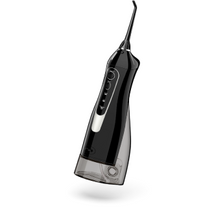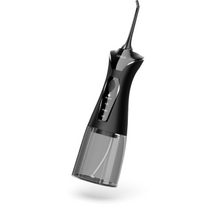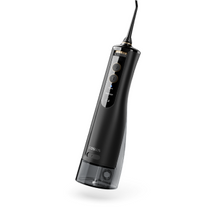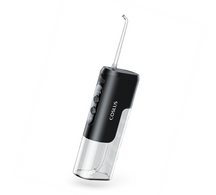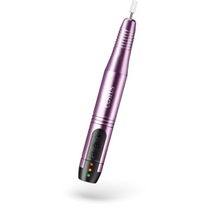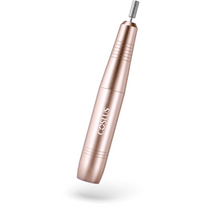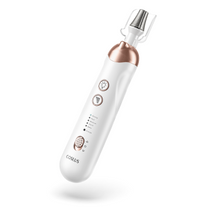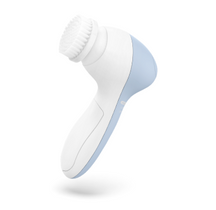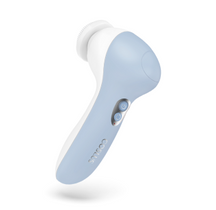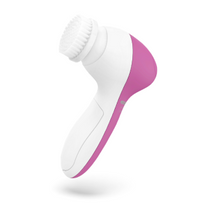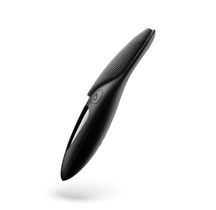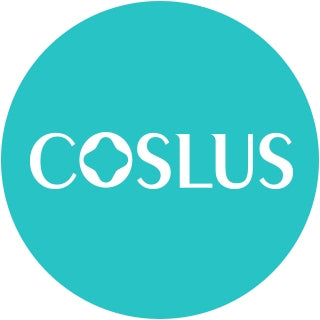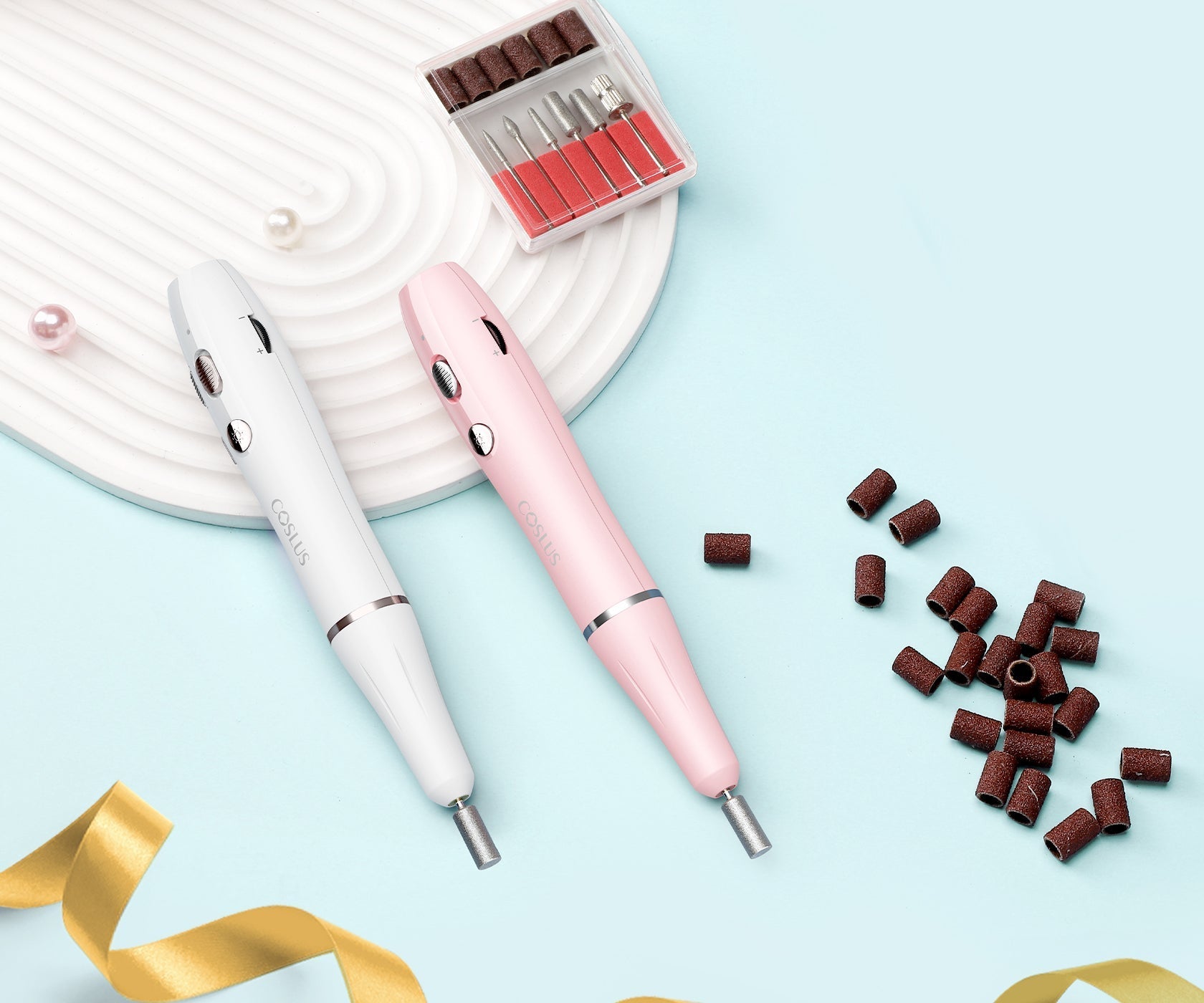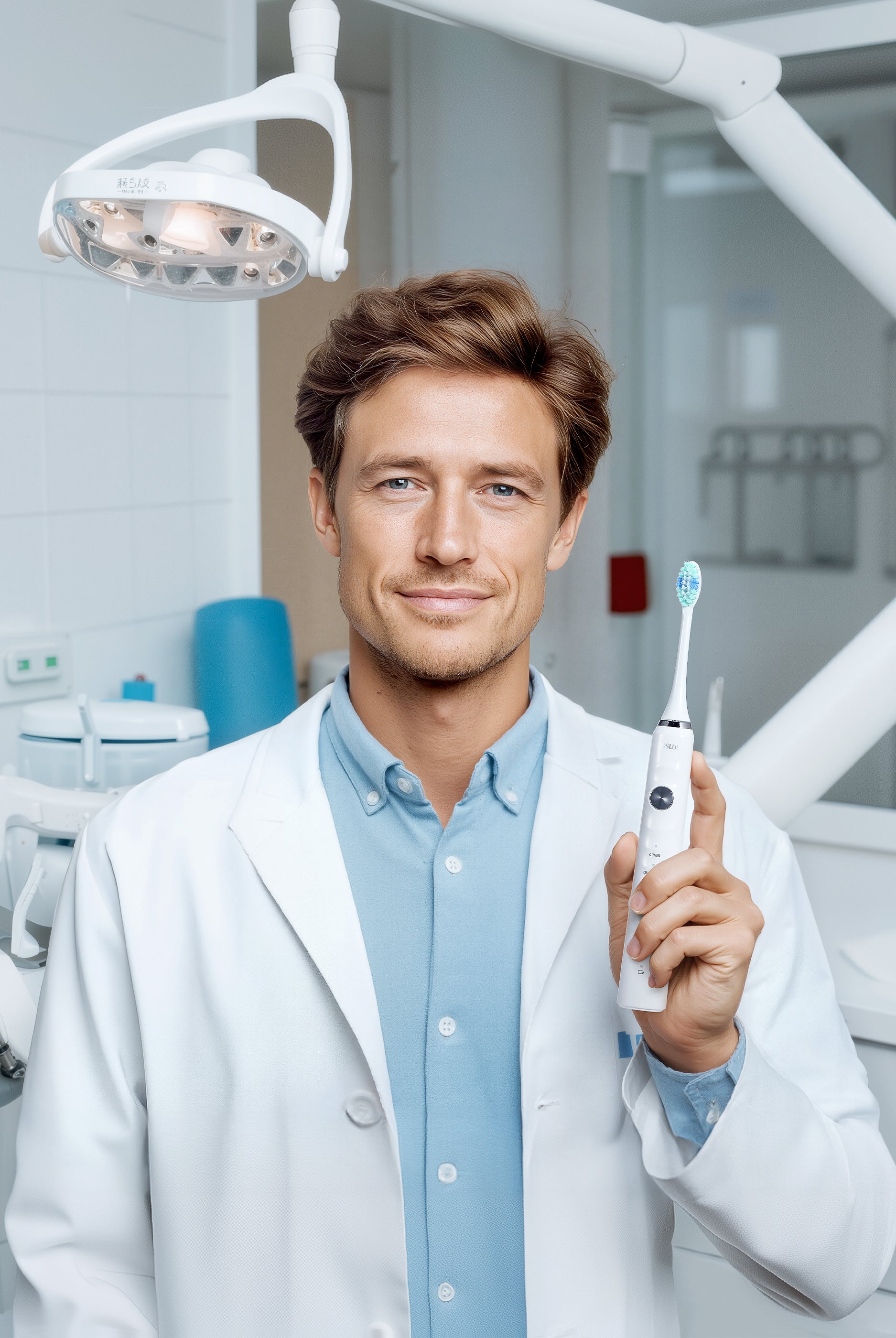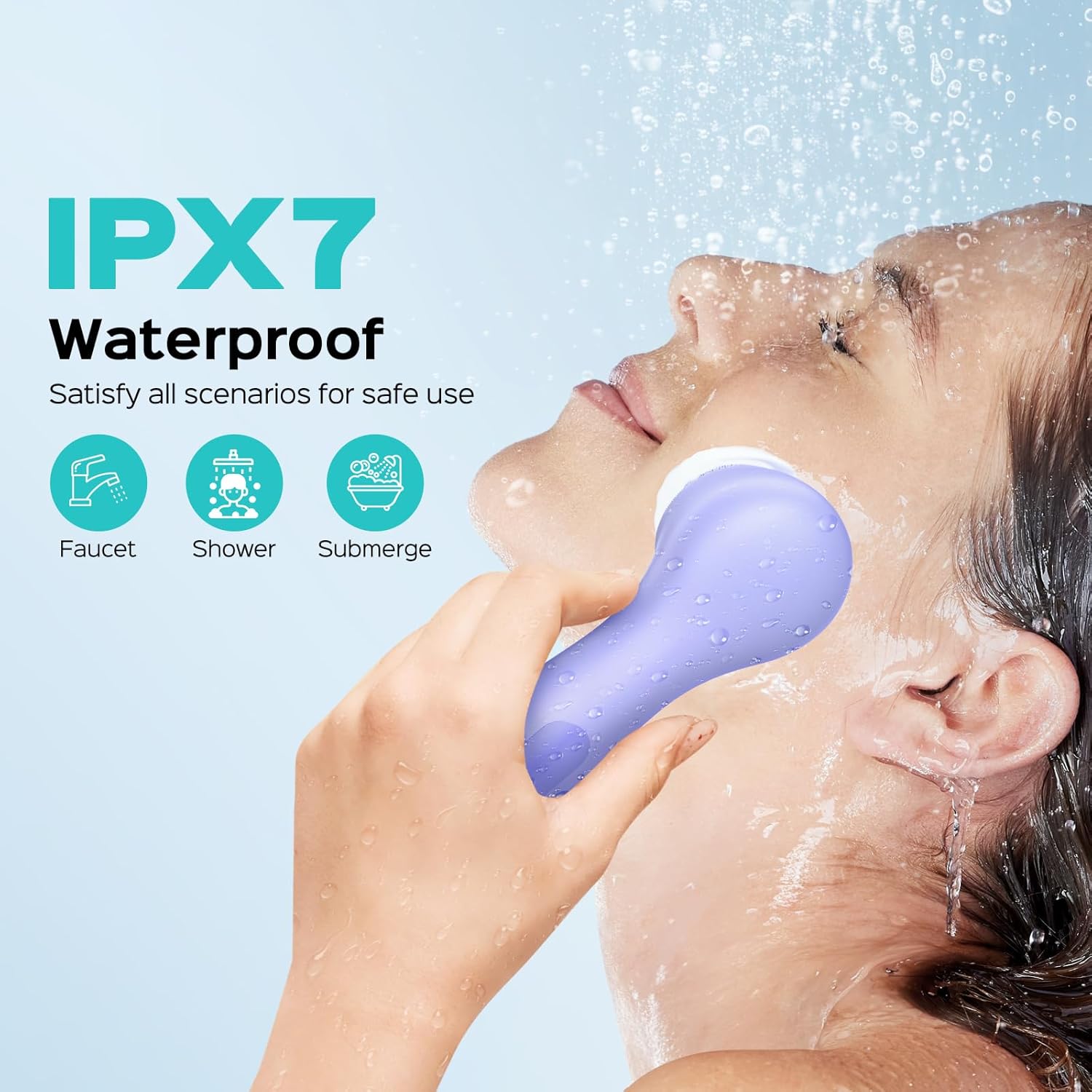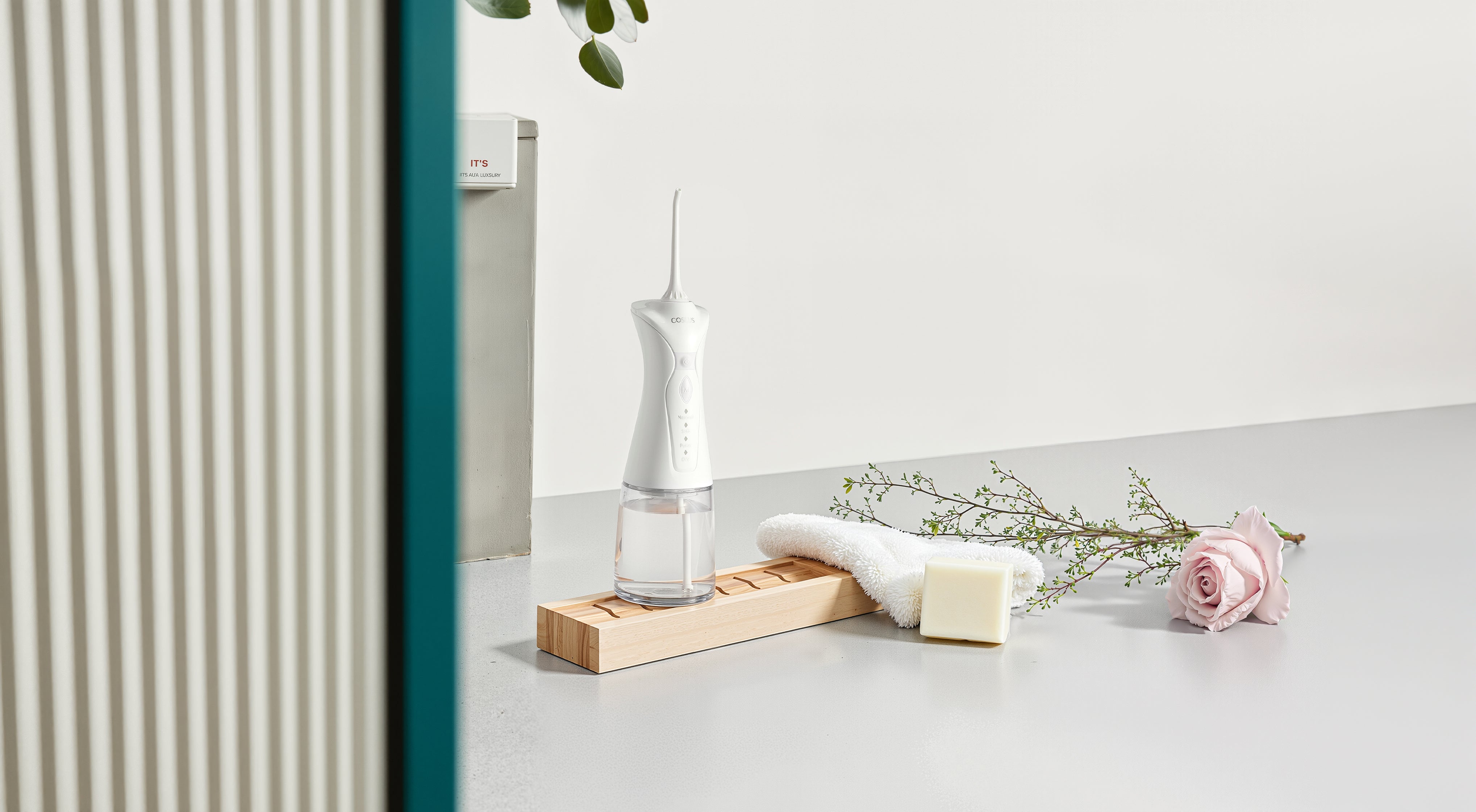
Does a Facial Brush Remove Blackheads?
Quick Answer
Yes, facial brushes can help remove blackheads by providing deeper exfoliation than washing with hands alone, loosening the oil and dead skin cells trapped in pores. While they typically reduce rather than completely eliminate blackheads, many users see significant improvement when using brushes 2-3 times weekly, especially when paired with blackhead-fighting ingredients like salicylic acid.
Introduction
Blackheads show up when oil and dead skin cells get trapped in open pores and turn dark, especially on your nose and forehead. Facial brushes are popular tools that clean deeper than just using your fingers, with soft bristles or silicone tips that gently scrub your skin. These brushes help by lifting away dirt from pores and boosting blood flow, which can loosen those stubborn blackheads regular washing often misses. Many people see fewer blackheads with regular use, though brushes usually reduce rather than completely eliminate them. For better results, try using your brush with face washes containing salicylic acid, which helps break down the oil causing blackheads in the first place.
What Makes Blackheads So Stubborn to Remove?
Blackheads are small, dark bumps that form when your pores get clogged with oil (sebum) and dead skin cells. Unlike whiteheads that close over, blackheads stay open at the surface. This allows the trapped material to contact air and oxidize, turning dark. This is similar to how an apple browns when cut—it's not dirt, but a chemical reaction.
These spots typically appear in areas where your skin is oilier, mainly the T-zone (forehead, nose, and chin). Your nose often has the most blackheads because it has more oil glands per square inch than almost anywhere else on your face. Understanding the causes of blackheads is the key to removing them.
Why Blackheads Are Hard to Get Rid Of:
Sticky Material: The sebum forming blackheads is sticky and becomes firmly lodged in pores
- Constant Production: Your skin continuously produces new oil and sheds cells daily, creating an endless supply of blackhead-forming materials
- Individual Factors: Some people naturally produce thicker, stickier oil or have pore shapes that clog more easily
- Improper Removal: Using the wrong techniques can push debris deeper into pores or cause inflammation, making blackheads more noticeable
How Do Facial Brushes Work?
Facial brushes clean skin more deeply than fingers alone can. They come in different types and use various methods to improve skin health.
3 Types of Facial Brushes
- Manual Brushes: These need no electricity and work using your hand movements. Manual brushes have soft bristles or silicone tips that you move in circles across your face. They're cheap, portable, and gentle.
- Silicone Brushes: Made from soft, medical-grade silicone that resists bacteria growth, making a silicone brush more hygienic than bristle brushes. It’s gentle enough for sensitive skin and usually waterproof.
- Electric/Sonic Brushes: Sonic brushes use batteries to create vibrating movements. Sonic brushes produce thousands of pulses per minute. The vibrations help break up dirt and oil in pores while gently touching the skin surface.
How They Clean Your Skin
- Exfoliation: All facial brushes remove dead skin cells from the surface, revealing fresher skin underneath. The bristles or silicone tips create gentle friction that lifts away dead cells more evenly than many scrubs.
- Deep Cleaning: Brushes reach into pores to remove trapped oil, makeup, and pollutants. Sonic brushes use rapid vibrations to "shake loose" stubborn debris. Studies show brushes remove makeup more effectively than washing with hands.
- Improved Blood Flow: The gentle massage action increases blood flow to your skin. This delivers more oxygen and nutrients to skin cells while removing waste. The result is a healthy glow and possibly reduced puffiness.
When used properly, facial brushes combine these three actions—exfoliation, deep cleaning, and improved circulation—to enhance skin texture and appearance. Electric brushes typically provide the most powerful cleaning through their vibration technology.
Can a Facial Brush Remove Blackheads?
Yes, facial brushes can help remove blackheads, but their effectiveness varies based on the type of brush, your skin type, and how you use them. While they can significantly reduce blackheads through exfoliation and deep cleansing, they typically won't eliminate blackheads completely on their own.
Clinical studies have shown promising results for facial brushes in improving overall skin condition, including blackhead reduction. In one study published in the Journal of Drugs in Dermatology, researchers found that using a sonic facial brush with an appropriate cleanser effectively reduced acne lesions, which often include blackheads. Both physician assessments and patient self-reports confirmed improvements in skin clarity and texture.
Dermatologists generally agree that facial brushes can be beneficial when used correctly. The mechanical exfoliation they provide helps to clear pores more effectively than manual washing alone. According to clinical reviews, sonic brushes in particular have demonstrated effectiveness in improving cleansing routines and enhancing overall skin condition when used as part of a complete skincare regimen.
User testimonialsalso support these findings, with many reporting visible reduction in blackheads after incorporating facial brushes into their routines. However, results vary significantly between individuals, with factors like skin type, brush type, and consistency of use playing important roles in determining effectiveness.
4 Benefits of Using a Facial Brush for Blackheads
Facial brushes have become popular skincare tools that use bristles or silicone tips to clean skin better than hands alone. When used correctly, they help with multiple skin issues while being gentle enough for regular use.
1. Deeper Cleansing Action
Facial brushes remove dirt that regular washing misses. They loosen dirt, oil, and dead skin cells from pores—the stuff that forms blackheads when exposed to air. This works especially well on oily areas like the nose, chin, and forehead. Studies show brushes clean more thoroughly than washing with hands alone, breaking down stubborn debris without harsh scrubbing.
2. Better Product Absorption
Your skin care products work better after using a facial brush. By exfoliating dead skin and debris, ingredients that fight blackheads—like salicylic acid or retinol—can penetrate deeper into pores. This means better performance from your existing products without buying new ones.
3. Improved Skin Texture and Appearance
Regular use smooths out uneven areas and yields smoother skin. Almost everyone discovers softer, more radiant skin when they add a brush to their routine. Exfoliation also lessens the size of pores by keeping them unclogged. And the massage effect stimulates circulation, giving you a healthier face.
4. Works for Most Skin Types
Facial brushes can work for most skin types when used correctly. For sensitive skin, silicone brushes are gentler than bristle versions. People with normal to oily skin may prefer bristle brushes for more intense cleaning. Those with combination skin can focus on oilier areas like the T-zone. Using brushes 2-3 times weekly provides effective blackhead management without damaging skin.
4 Possible Problems When Using Facial Brushes for Blackheads
While facial brushes can help with blackheads, there are important risks to know about. Using these tools correctly and knowing when to avoid them helps prevent skin problems.
1. Risk of Over-Exfoliation
Using a brush too often or too hard can damage your skin's protective layer, causing redness and irritation. Ironically, this can trigger more oil production, making blackheads worse. Signs of over-exfoliation include unusual shininess, tight skin, and flaking. Most experts recommend using brushes only 2-3 times weekly, not daily.
2. Not Right for All Skin Types
People with active acne should avoid facial brushes as they can spread bacteria and irritate inflamed skin. Those with very sensitive skin, rosacea, or eczema should be cautious as brushing may trigger flare-ups. If you're using strong acne treatments or had recent skin procedures, wait until your skin heals before using a brush.
3. Bacteria Buildup Concerns
Facial brushes can trap moisture and debris, creating a breeding ground for bacteria. Clean your brush after each use with warm water and mild soap. Replace brush heads every 2-3 months, like toothbrushes. Always let your brush dry completely between uses in an open area.
4. Finding What Works for You
Start with once-weekly use and gradually increase if your skin responds well. Use light pressure—let the brush do the work. If you're unsure whether a facial brush is right for you, consider talking to a dermatologist for personalized advice based on your skin needs.
6 Basic Steps for Using Your Facial Brush
Correct usage of a facial brush eradicates blackheads without harming your skin. Just go through these simple steps to get the best results and have healthy skin.
Step 1: Prepare Your Skin
Splash your face several times with lukewarm water until your face is fully wet. Water has to feel comfortable against the skin—not hot, since hot water strips natural oils and can leave skin red and irritated. Wash your hands first before handling your face in order not to transfer dirt and bacteria.
Step 2: Apply Cleanser
Choose a gentle cleanser that is appropriate for your skin type. For dry skin, try a creamy formula. Squeeze about a dime-sized amount either onto your damp face or directly onto the brush head. Too much cleanser can create too much foam and make it harder to rinse off.
Step 3: Brush Technique
Turn on your brush to its lowest setting if it has multiple speeds. Hold the brush against your skin with just enough contact to feel the bristles moving—pressing too hard can cause irritation. Sweep it around in small circles, taking about 10-15 seconds per area of your face. Take special precautions in the spots where blackheads are prone to appear, e.g., the nose, chin, and forehead, but avoid lingering over an area for long. The entire process should never take longer than 60 seconds.
Step 4: Rinse and Dry
Splash your face with lukewarm water at least 10-12 times, making sure to remove all traces of cleanser. Leftover cleanser can clog pores and cause irritation. After rinsing, take a clean, soft towel and gently press it against your skin to absorb water. Avoid rubbing or dragging the towel across your face, which can irritate freshly exfoliated skin.
Step 5: Maintain a Schedule
Mark your calendar or set reminders to use your facial brush only 2-3 times per week with at least one day between uses. Your skin needs time to recover between exfoliation sessions. If you notice any redness, sensitivity, or irritation, reduce usage to once a week or stop completely until your skin heals. Remember that more frequent use doesn't mean better results—it often leads to skin damage.
Step 6: Clean Your Brush
Immediately after use, give your brush head a good soaking in running water when the bristles are still wet. Rinse gently out with your fingers any cleanser or skin cells embedded in the bristles. Shake off surplus water from the brush and stand the brush bristle-end upwards in a dry, well-ventilated space—not in the sealed bathroom cabinet where the moisture builds up. Dry completely before applying it again in order to prevent breakouts caused by harmful bacteria growth.
Facial Brushes vs. Other Blackhead Removal Methods
When it comes to tackling blackheads, you have several options beyond facial brushes. Each method works differently and offers unique benefits and drawbacks depending on your skin type, sensitivity level, and how severe your blackheads are.
Working Principles of 7 Methods
1. Facial Brushes: These items use rotating or vibrating bristles to manually remove dirt and dead skin cells from the surface of your skin. The gentle scrubbing is effective in opening up pores by breaking up and flushing away the oil and dead skin that form blackheads.
2. Chemical Exfoliants (BHA/AHA): These have acids that dissolve the bond between dead skin cells. BHAs like salicylic acid are oil-soluble, so they go deep into pores to break up the oil and debris, causing blackheads. AHAs hit the skin more on the surface to smooth out the overall texture.
3. Manual Extraction: This is a straightforward process wherein clean fingers or extraction tools are applied to exert pressure around a blackhead, forcing the sebum plug and dead skin from the pore. The contents are manually removed from the skin.
4. Pore Strips: These adhesive strips are put on moist skin, usually on the nose. When dry, they adhere to the tops of blackheads and surface oil. When they're peeled off, they bring out the visible part of blackheads and surface grime.
5. Clay Masks: These work by drawing excess oil from the skin's surface and pulling impurities out of pores as the clay hardens. Drying brings debris to the surface, making blackheads less noticeable.
6. Professional Chemical Peels: Dermatologists apply more concentrated acids that penetrate deeper than store-bought products. Peels strip away multiple layers of skin cells, unclog plugged pores, and resurface with new cell growth.
7. Microdermabrasion: A salon treatment in which a machine that sprays small crystals on the skin or a diamond wand actually sands off the top layer of skin cells. The pores open up, and then a vacuum sweeps away the loosened waste.
Comparison of Blackhead Removal Methods
| Method | Best For | Pros | Cons | Frequency of Use |
| Facial Brushes | Mild to moderate blackheads; oily skin types |
|
|
2-3 times weekly |
| Chemical Exfoliants (BHA/AHA) | All skin types; BHAs especially good for oily, acne-prone skin |
|
|
Daily to 3 times weekly |
| Manual Extraction | Visible, ready-to-extract blackheads |
|
|
As needed, not for regular use |
| Pore Strips | Nose and chin blackheads |
|
|
Once weekly at most |
| Clay Masks | Oily skin; mild blackheads |
|
|
1-2 times weekly |
| Professional Chemical Peels | Moderate to severe blackheads; stubborn cases |
|
|
Every 4-6 weeks |
| Microdermabrasion | Mild to moderate blackheads; thicker skin |
|
|
Every 2-4 weeks |
The most effective approach often combines methods—for example, using chemical exfoliants regularly with occasional facial brush use, supplemented by professional treatments a few times a year. Always introduce new products or tools gradually and pay attention to how your skin responds. What works best will depend on your skin type, sensitivity level, and the persistence of your blackheads.
8 FAQs about Facial Brush Blackhead Removal
Q1: Do facial brushes work for everyone?
No, facial brushes are not the same for everyone. They are best suited to individuals with normal to oily skin who do not have active acne or sensitive skin conditions such as rosacea or eczema. If your skin is dehydrated, sensitive, or fragile, facial brushes can be too harsh and potentially lead to redness or small tears in your skin. Start with the gentlest brush head and test on a small area first.
Q2: How often should I use a facial brush?
Most dermatologists suggest using a facial brush 2-3 times a week, leaving one day in between. Daily use can damage the natural defense barrier of your skin and lead to dryness, irritation, or even over-oiliness as your skin tries to protect itself. If you're new to facial brushes, start once a week and increase gradually as your skin gets used to it.
Q3: Can facial brushes prevent blackheads from coming back?
Blackheads can be reduced by facial brushes, but they will never stop altogether. Regularly using them washes away dead skin cells that can clog pores, but blackheads develop because of so many factors like oil production, the speed with which your skin cells shed, and genetics. For optimal effect, use your facial brush alongside oil-controlling products, for example, products with salicylic acid, and stick to a regular skincare routine.
Q4: What should I do if my skin gets irritated?
If your skin becomes red, sore, or sensitive because of using a facial brush, stop using it right away and allow your skin to heal. Use fragrance-free mild moisturizers and avoid other scrubs or peels until the irritation clears up. When you brush again, brush less often, press less hard, spend less time for each area, or switch to a softer brush head. If your skin continues to be irritated, consult a skin doctor since facial brushes might not be suited for your skin.
Q5: Which brush head is best for blackheads?
For blackheads, a "deep cleansing" or "pore cleansing" branded brush is generally used, which has slightly harder bristles to break up the dead skin and oil in pores more. If you do have sensitive skin, always opt for the mildest first and notice how you use it, not how hard the bristles are.
Q6: Should I use special cleansers with my facial brush?
You don't need special cleaners, but you don't want to use abrasive or gritty cleansers. Non-foaming, mild face washes work best with facial brushes since the brush itself will scrub. Do not use face washes that have beads or grains or face washes that have acids like glycolic or salicylic acid when you brush.
Q7: How do I know if my facial brush is clean enough?
A clean facial brush should appear free of any product, be stain-free, and not have a bad odor. Rinse thoroughly after every use until the water is clear, and dry it completely in a well-ventilated area. Change brush heads every 3 months or sooner if bristles become frayed, stained, or develop a bad odor.
Q8: Can I share my facial brush with others?
No, never share your face brush with anyone else, even when you change the head. Skin cells and bacteria are passed from person to person and can cause infection or pimples. Everyone must use a different gadget, even in the same house.
Find Your Perfect Blackhead Solution Today
Dealing with blackheads doesn't have to be complicated. Facial brushes work well for many people, but they're just one tool in your skincare toolkit. What works best really depends on your skin type, sensitivity, and how stubborn those blackheads are. Start with gentle methods and see how your skin responds. Mix and match approaches—maybe use a facial brush twice weekly along with a clay mask on the weekend. If you're still struggling, it might be worth chatting with a skin doctor for personalized advice. Remember, clear skin takes time and consistency. Be patient with your skin, adjust your routine when needed, and you'll find the right blackhead-fighting combination that works for you.
Table of Contents
- Quick Answer
- Introduction
- What Makes Blackheads So Stubborn to Remove?
- How Do Facial Brushes Work?
- Can a Facial Brush Remove Blackheads?
- 4 Benefits of Using a Facial Brush for Blackheads
- 4 Possible Problems When Using Facial Brushes for Blackheads
- 6 Basic Steps for Using Your Facial Brush
- Facial Brushes vs. Other Blackhead Removal Methods
-
8 FAQs about Facial Brush Blackhead Removal
- Q1: Do facial brushes work for everyone?
- Q2: How often should I use a facial brush?
- Q3: Can facial brushes prevent blackheads from coming back?
- Q4: What should I do if my skin gets irritated?
- Q5: Which brush head is best for blackheads?
- Q6: Should I use special cleansers with my facial brush?
- Q7: How do I know if my facial brush is clean enough?
- Q8: Can I share my facial brush with others?
- Find Your Perfect Blackhead Solution Today
Table of Contents
- Quick Answer
- Introduction
- What Makes Blackheads So Stubborn to Remove?
- How Do Facial Brushes Work?
- Can a Facial Brush Remove Blackheads?
- 4 Benefits of Using a Facial Brush for Blackheads
- 4 Possible Problems When Using Facial Brushes for Blackheads
- 6 Basic Steps for Using Your Facial Brush
- Facial Brushes vs. Other Blackhead Removal Methods
-
8 FAQs about Facial Brush Blackhead Removal
- Q1: Do facial brushes work for everyone?
- Q2: How often should I use a facial brush?
- Q3: Can facial brushes prevent blackheads from coming back?
- Q4: What should I do if my skin gets irritated?
- Q5: Which brush head is best for blackheads?
- Q6: Should I use special cleansers with my facial brush?
- Q7: How do I know if my facial brush is clean enough?
- Q8: Can I share my facial brush with others?
- Find Your Perfect Blackhead Solution Today


